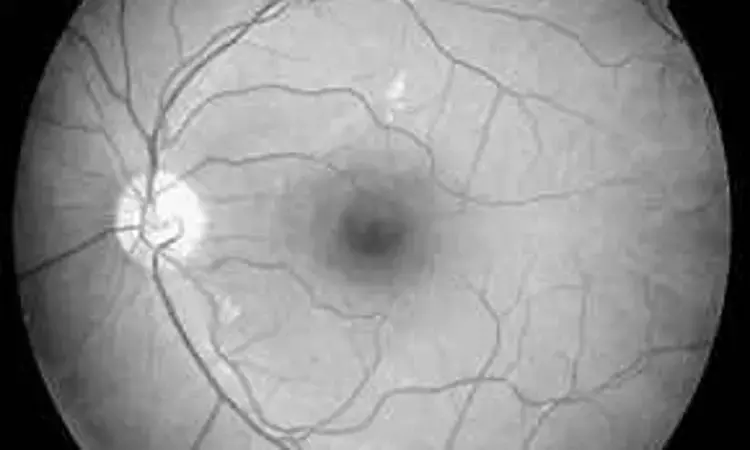- Home
- Medical news & Guidelines
- Anesthesiology
- Cardiology and CTVS
- Critical Care
- Dentistry
- Dermatology
- Diabetes and Endocrinology
- ENT
- Gastroenterology
- Medicine
- Nephrology
- Neurology
- Obstretics-Gynaecology
- Oncology
- Ophthalmology
- Orthopaedics
- Pediatrics-Neonatology
- Psychiatry
- Pulmonology
- Radiology
- Surgery
- Urology
- Laboratory Medicine
- Diet
- Nursing
- Paramedical
- Physiotherapy
- Health news
- Fact Check
- Bone Health Fact Check
- Brain Health Fact Check
- Cancer Related Fact Check
- Child Care Fact Check
- Dental and oral health fact check
- Diabetes and metabolic health fact check
- Diet and Nutrition Fact Check
- Eye and ENT Care Fact Check
- Fitness fact check
- Gut health fact check
- Heart health fact check
- Kidney health fact check
- Medical education fact check
- Men's health fact check
- Respiratory fact check
- Skin and hair care fact check
- Vaccine and Immunization fact check
- Women's health fact check
- AYUSH
- State News
- Andaman and Nicobar Islands
- Andhra Pradesh
- Arunachal Pradesh
- Assam
- Bihar
- Chandigarh
- Chattisgarh
- Dadra and Nagar Haveli
- Daman and Diu
- Delhi
- Goa
- Gujarat
- Haryana
- Himachal Pradesh
- Jammu & Kashmir
- Jharkhand
- Karnataka
- Kerala
- Ladakh
- Lakshadweep
- Madhya Pradesh
- Maharashtra
- Manipur
- Meghalaya
- Mizoram
- Nagaland
- Odisha
- Puducherry
- Punjab
- Rajasthan
- Sikkim
- Tamil Nadu
- Telangana
- Tripura
- Uttar Pradesh
- Uttrakhand
- West Bengal
- Medical Education
- Industry
Intravitreal Aflibercept and Faricimab decreases ocular blood flow to optic nerve head and peripapillary retinal vessels: Study

Diabetic retinopathy (DR) is the primary cause of visual impairment among working-age populations in industrialized nations. Vision loss may result from various mechanisms, but the most prevalent cause is diabetic macular edema (DME). The treatment landscape for DME has advanced significantly over the past decade. Currently, the most frequently employed therapeutic approach involves intravitreal administration of anti-vascular endothelial growth factor (VEGF) agents, and the prognosis of patients with DME has markedly improved. There are various commercially available anti-VEGF agents. Older options include monoclonal antibodies such as ranibizumab and bevacizumab. While ranibizumab and bevacizumab alone inhibit VEGF-A, aflibercept, a recombinant fusion protein, inhibits VEGF-A, VEGF-B, and placental growth factor (Plgf), and faricimab, a bispecific antibody, inhibits both VEGF-A and angiopoietin-2 (Ang-2).
Laser speckle flowgraphy (LSFG) facilitates two-dimensional, non-invasive measurements of perfusion at the optic nerve head (ONH), retina, and choroid by utilizing the laser speckle phenomenon and has proven instrumental in quantifying ocular blood flow in patients with DR, retinal vein occlusion, age-related macular degeneration, or central serous chorioretinopathy. In this study, authors aimed to evaluate and compare the effects of intravitreal aflibercept (IVA) versus intravitreal faricimab (IVF) on blood flow in the optic nerve head and retinal vessels of the peripapillary region using LSFG in patients with DME. This was the first study to investigate the effect of intravitreal faricimab on ocular perfusion and compare the effects of different anti-VEGF agents on ocular blood flow one month after injection.
This study included 20 eyes of 18 patients treated with IVA and 15 eyes of 11 patients treated with IVF for DME. The mean blur rate (MBR) of the ONH and retinal artery and vein of the peripapillary region were measured using LSFG at baseline and 1 month after injection. Central retinal thickness (CRT) and best-corrected visual acuity (BCVA) were measured for all patients.
CRT decreased significantly in both IVA-treated (p = 0.0003) and IVF-treated groups (p = 0.0004). Some of the MBR-related parameters of the ONH, such as MBR of all areas (MA), MBR of vascular areas (MV), and MBR of tissue areas (MT), decreased significantly 1 month after IVA and IVF compared to baseline values (MA of IVA, p < 0.0001; MT of IVA, p = 0.0220; MA of IVF, p = 0.0002; MT of IVF, p = 0.0461). MBR of the retinal artery (MBR-A) and vein (MBR-V) also decreased significantly 1 month after IVA and IVF compared with baseline values (MBR-A of IVA, p = 0.0002; MBR-V of IVA, p = 0.0010; MBR-A of IVF, p = 0.0368). No significant difference in ocular perfusion was observed between the IVA-treated and IVF-treated groups.
In conclusion, the findings demonstrated that both IVA and IVF resulted in a decrease in ocular blood flow to the optic nerve head and peripapillary retinal vessels, as evaluated using the LSFG. This decrease was associated with a reduction in CRT and improvement in BCVA. No significant difference was observed in MBR reduction between the IVA-treated and IVF-treated groups. Study findings warrant further long-term investigations to reveal differences in ocular circulation modifications between aflibercept and faricimab.
Source: Mizukami et al; Clinical Ophthalmology 2024:18 https://doi.org/10.2147/OPTH.S476307
Dr Ishan Kataria has done his MBBS from Medical College Bijapur and MS in Ophthalmology from Dr Vasant Rao Pawar Medical College, Nasik. Post completing MD, he pursuid Anterior Segment Fellowship from Sankara Eye Hospital and worked as a competent phaco and anterior segment consultant surgeon in a trust hospital in Bathinda for 2 years.He is currently pursuing Fellowship in Vitreo-Retina at Dr Sohan Singh Eye hospital Amritsar and is actively involved in various research activities under the guidance of the faculty.
Dr Kamal Kant Kohli-MBBS, DTCD- a chest specialist with more than 30 years of practice and a flair for writing clinical articles, Dr Kamal Kant Kohli joined Medical Dialogues as a Chief Editor of Medical News. Besides writing articles, as an editor, he proofreads and verifies all the medical content published on Medical Dialogues including those coming from journals, studies,medical conferences,guidelines etc. Email: drkohli@medicaldialogues.in. Contact no. 011-43720751


